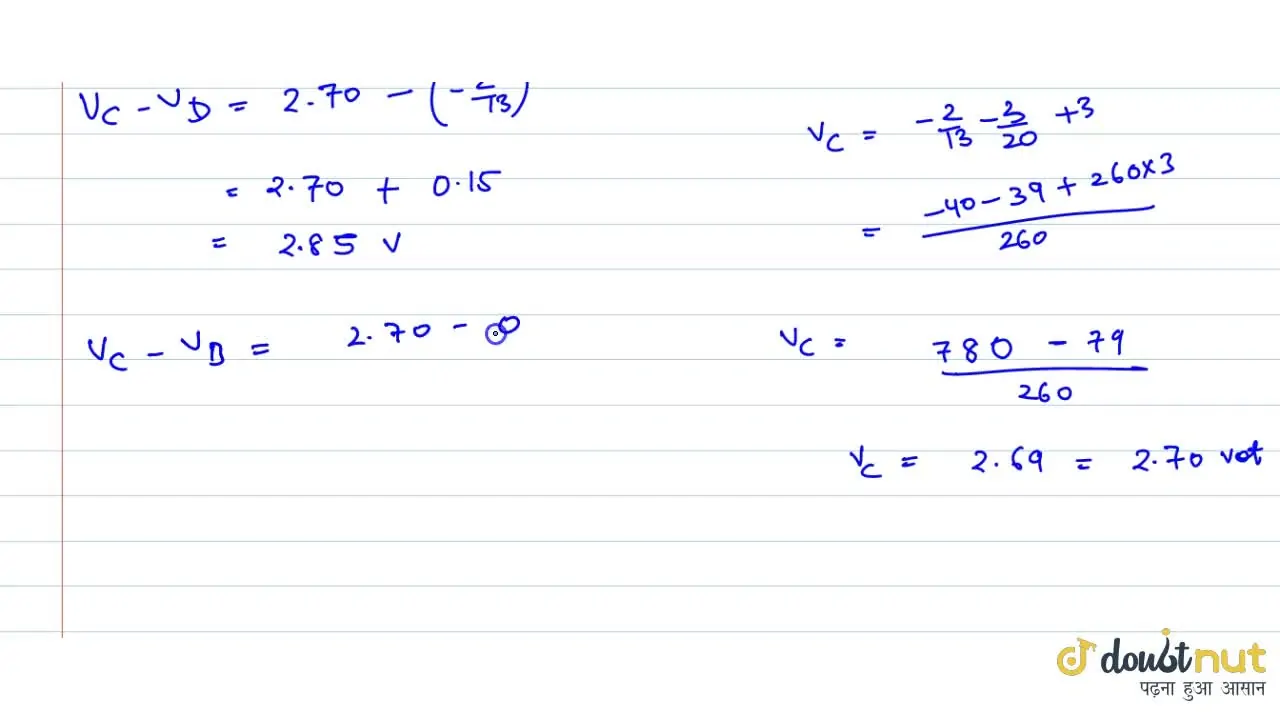In the circuit shown in figure E,F, G and H are cell of emf 2,1,3, and 1V respectively. The resistances 2,1,3 and 1(Omega)are their respective internal resistance .Calculate (a)the potential difference between B and D and (b) the potential differences across the terminals of each of each of the cells G and H.
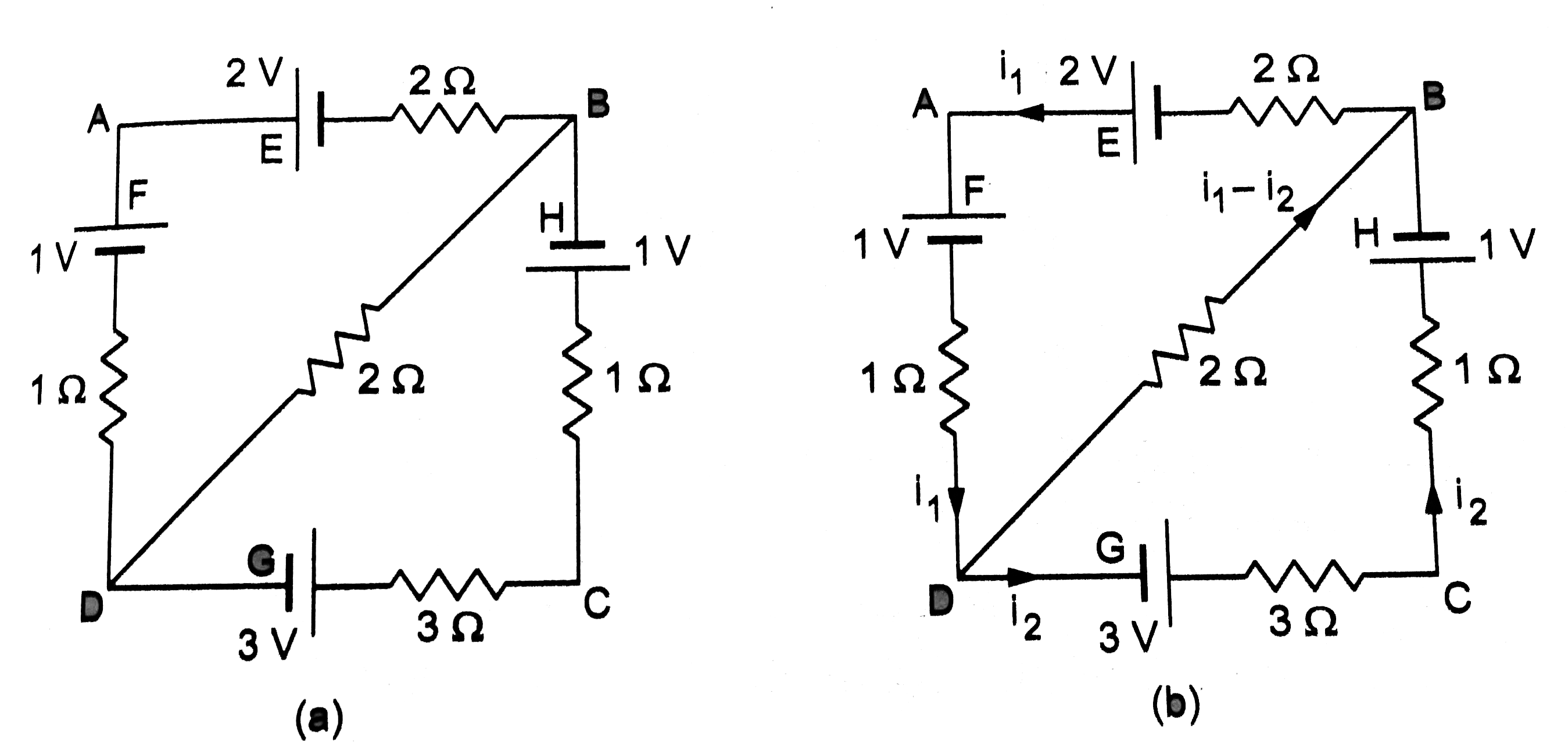
2112V.
213V.
2114V.
2113V.
The correct Answer is:D
Suppose a current i_(1) goes in the branch BAD and current i_(2) in the branch DCB. The current in DB will be i_(1)-i_(2) from the junction law. The circuit with the currents shown is redrawn in figure. Applying the loop law to BADB we ge,
(2(Ω))i1−2V+1V+(1(Ω))i1+(2(Ω))(i1−i2)=0
(5(Ω))i1−(2(Ω))i2=1V....(i)
Applying the same law to the loop DCBD,we get
−3V+(3(Ω)i2+(1(Ω))i2+1V−(2(Ω))(i1−i2)=0
or,−(2(Ω))i1+(6(Ω))i2=2V....(ii)
From (i)and (ii),
i1=513A,i2=613A.
sotˆi_(1)-i_(2)=1/13A.<br>thecurrent∈BDisomB→D.<br>(a)V_(B)-V_(D)=(2(Omega)((1)/(13)A)=(2)/(13)V.<br>The potential difference across the cell G is
Vc−Vd=−(3(Ω))i2=3V.
=(3V−1813V)=2113V.
Thepotentiald⇔erenceacrossthecellHis<br>V_(C)-V_(B)=(1(Omega))i_(2)+1V=(1(Omega))((6)/(13)A+1V=(19)/(13)V.
Related Playlists
- BOOK - HC VERMACHAPTER - ELECTRIC CURRENT IN CONDUCTORSEXERCISE - worked out Example1videos
ELECTRIC CURRENT IN CONDUCTORS
- BOOK - HC VERMACHAPTER - ELECTRIC CURRENT IN CONDUCTORSEXERCISE - Short Answer17videos
ELECTRIC CURRENT IN CONDUCTORS
- BOOK - HC VERMACHAPTER - ELECTRIC CURRENT IN CONDUCTORSEXERCISE - Exercises84videos
ELECTRIC CURRENT IN CONDUCTORS
- BOOK - HC VERMACHAPTER - DISPERSION AND SPECTRAEXERCISE - Exercises11videos
DISPERSION AND SPECTRA
- BOOK - HC VERMACHAPTER - ELECTRIC CURRENT THROUGH GASESEXERCISE - Exercises23videos
ELECTRIC CURRENT THROUGH GASES
Similar Questions
In the circuit shown in E, F, G, and H are cells of emf 2,1,3 and 1 V, respectively. The resistances 2Ω,1Ω,3Ωand1Ω are their respectivle internal resistances.
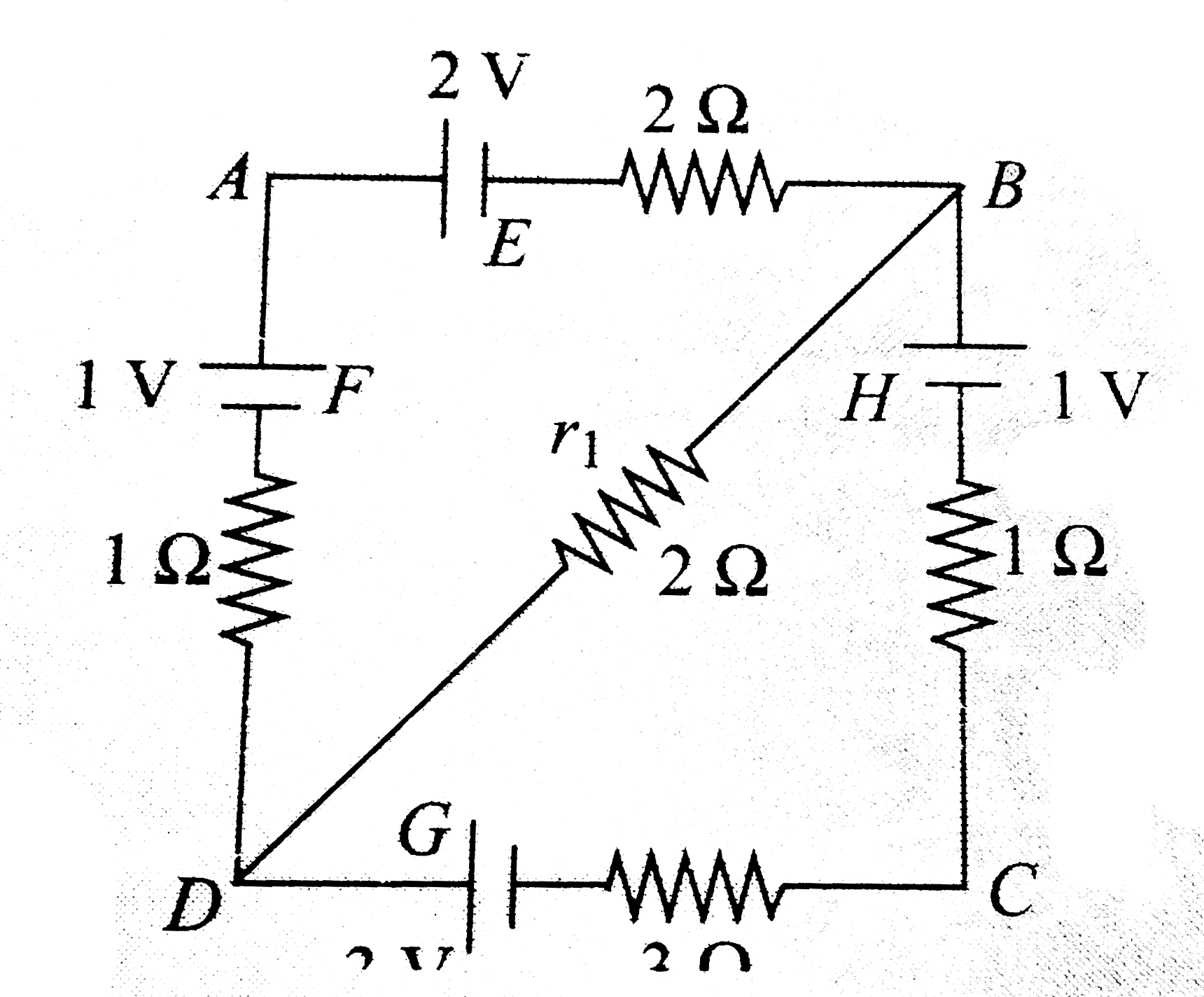
i. Find the potential difference between B and D.
(ii) Calculate the potential differences across the terminals of each of the cells G and H.View SolutionIn the circuit shown in figure-3.159 cells E,F,G and H are of EMF 2V, 1V,3V and 1V respevitly and their internal resitance are 2Ω,1Ω,3Ω and 1Ω respectively Calculate
(a) The potential difference between points B and D
(d) The potential difference across the terminals of the cell G and H.
 View Solution
View SolutionIn the circuit shown E,F,G and H are cells of emf 2V,1V,3V and 1V respectively and their internal resistance are 2Ω,1Ω,3Ω and 1Ω respectively.
 View Solution
View Solution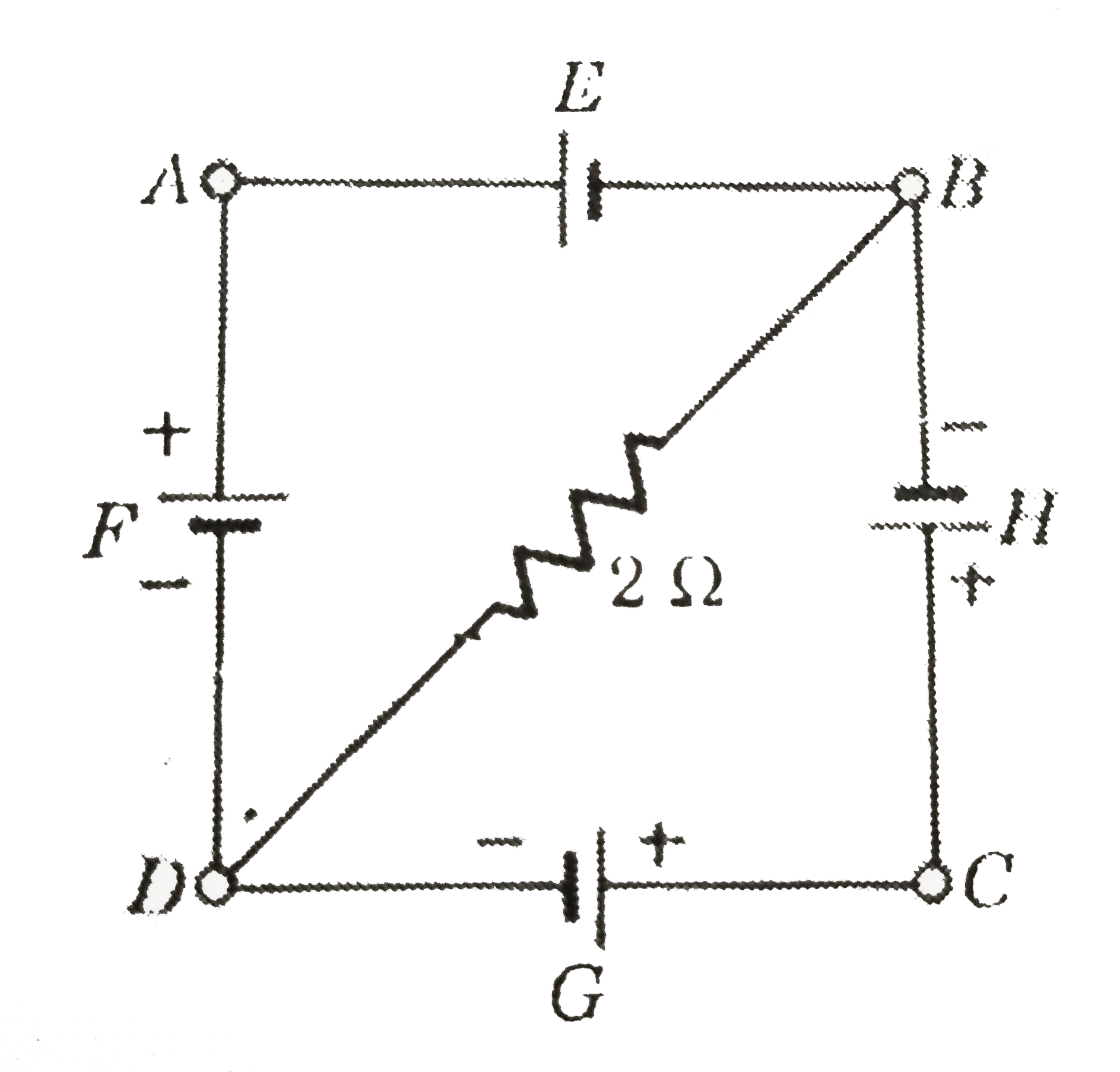
In the circuit shown in figure. The cells E,F,G and H have e.m.f's 2,1,3 and 1 V and internal resistance 2,1,3 and 1Ω respectively. Find the potential differences between points B and D, and across the terminals of the cells G and H.
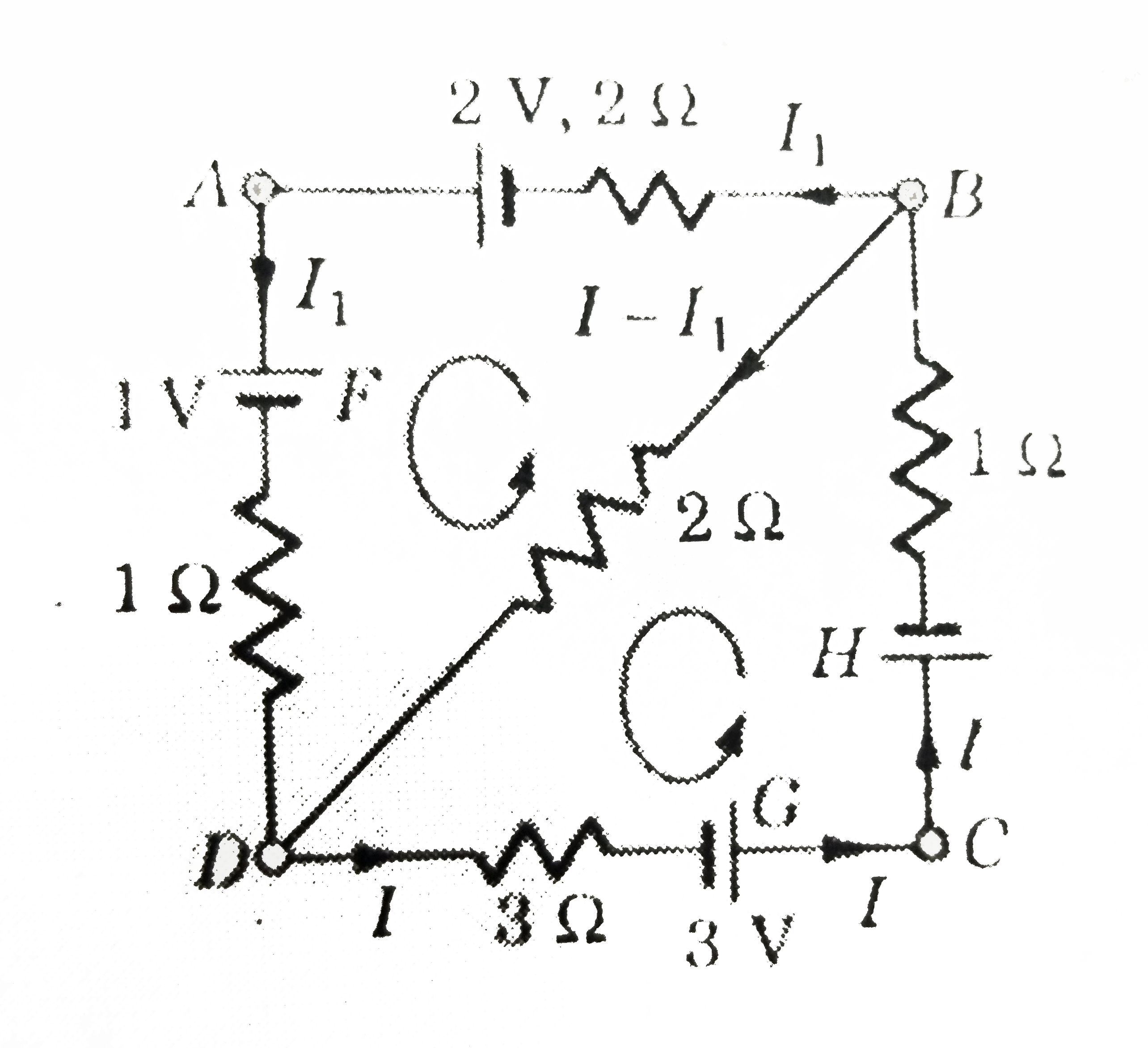 View Solution
View SolutionIn the circuit E,F,G,Hare cell of emf 2,1,3and 1Ω respectively .The potential difference across the terminal of each of the cell G and H are
 View Solution
View SolutionTwo non-ideal batteries have e.m.f 2V and 8V respectively and internal resistance 1 Omega and 2 Omega respectively as shown in the figure. If the potential difference between a and b is zero then the resistance R has a value
_PHY_E01_014_Q01.png) View Solution
View SolutionTwo cells A and B of e.m.f.2 V and 1.5 V respectively, are connected as shown in figure through an external resistance 10 Ω The internal resistance of each cell is 5 Ω. The potential difference EAandEB across the terminals of the cells A and B respectively are
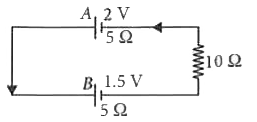 View Solution
View Solutionv31
View SolutionA cell of e.mf. E and internal resistance r is connected in series with an external resistance nr. Then, the ratio of the terminal potential difference to E.M.F.is
View SolutionA cell of emf 'E' is connected across a resistance R.The potential difference between the terminals of the cell is found to be "V" .The internal resistance of the cell must be:
View Solution

